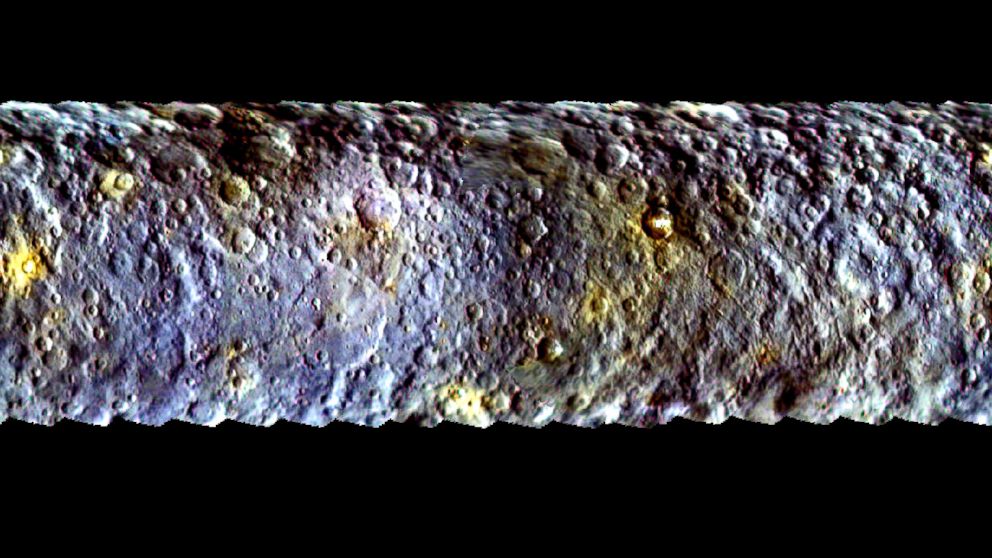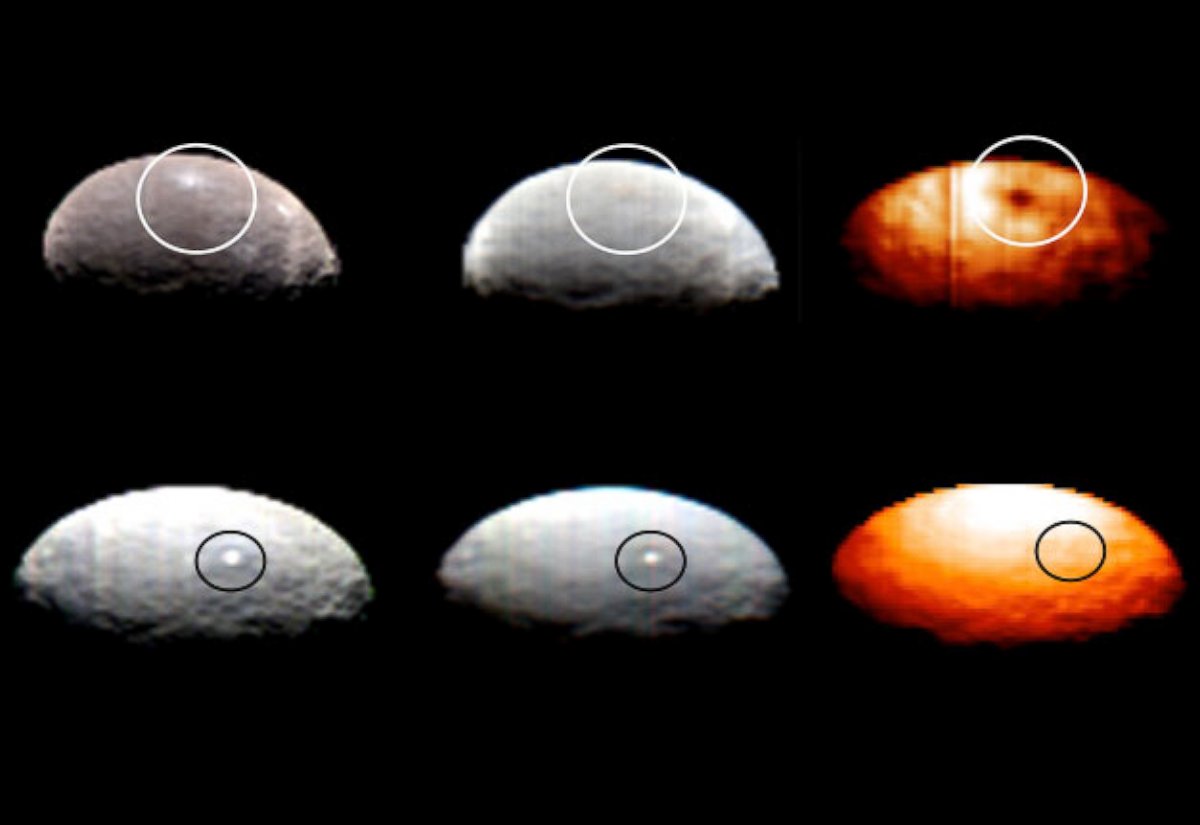What NASA Learned From Bright Spots on Dwarf Planet Ceres
The dwarf planet has a surprising history.

— -- From a distance, the dwarf planet Ceres looks gray and drab, but a newly released photo from NASA's Dawn mission shows the cosmic mass in color.
The array of colors seen on the surface of Ceres indicates the dwarf planet, located in the asteroid belt between Mars and Jupiter, was likely once fully active.
"This dwarf planet was not just an inert rock throughout its history. It was active, with processes that resulted in different materials in different regions," Chris Russell, principal investigator for NASA's Dawn mission, said in a statement. "We are beginning to capture that diversity in our color images."

NASA has been able to determine from the photos and the surface mapping that Ceres has mysterious bright spots, along with hot and cold spots, which would not be found on an asteroid.
Nearly 600 miles in diameter, about 25 percent of Ceres' mass is believed to be ice. NASA's Dawn mission has been orbiting Ceres since March and will continue studying the dwarf planet through June 2016.